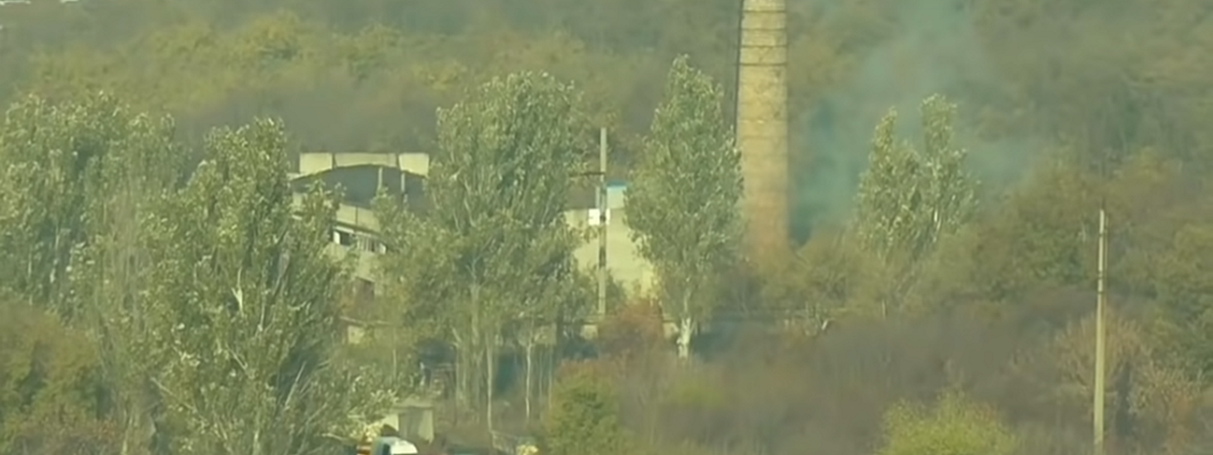Blast highlights “MGB” detentions in separatist-held Donetsk
Act of sabotage by unknown assailant targeted Russian-backed separatist communication infrastructure
Blast highlights “MGB” detentions in separatist-held Donetsk

Act of sabotage by unknown assailant targeted Russian-backed separatist communication infrastructure

Open-source evidence has confirmed that an act of sabotage took place in eastern Ukraine on October 27, when an unknown person blew up a mobile communications base station run by a separatist-controlled entity.
While acts of sabotage are not uncommon in separatist-held Ukraine, they usually target rail and road infrastructure rather than communications infrastructure and are seldom caught on camera. By taking out this particular station, 4G coverage in Donetsk may have been affected — the person who claimed responsibility for the attack claimed that it was intended to draw people out to protest torture by separatists in the region or, as he insinuated, risk further attacks on the cellular infrastructure in the region.
The station formerly belonged to Russian-owned service provider Kyivstar but was now under a separatist-controlled company known as “Phoenix” (Феникс), a move possibly made in response to the increased difficulty by which the Russian company operates in Ukraine. The company is a cellular service provider based on equipment expropriated from Kyivstar within separatist-held territory. According to an online Russian tech journal, Phoenix phones currently work with special Ukrainian area codes unique to the provider and use VOIP technology to place calls to anywhere except government-held territory in Ukraine.
Corroborating social media reports
Initial reports of the explosion came from social media pages claiming that the explosion had targeted a communication tower in the Proletarskyi district of Donetsk, in the south-eastern portion of the city. While the target was, in fact, not a communications tower, the reports turned out to be partially true in that the attack targeted communications infrastructure and, in particular, 4G network equipment.
Shortly after initial reports, video evidence emerged of the blast in which the cameraman showed a note after the explosion. The note read as follows:
Это сделано с целью привлечь внимание к бесчеловечным пыткам а подвалах МГБ. Жестокое обращение и привязывание к кконечностям проводов с током в “народных” республиках стал нормой.
Народ Донбасса должен выйти на акцию протеста против пыток или фашистская республика останетсыа без связи.
Translation: This was done with the goal to draw attention to the inhumane torture in the basements of the MGB. Cruel treatment and tying wires with electric current to peoples’ extremities in the “people’s” republics has become the norm. The people of the Donbas must protest against torture, or the fascist republic will remain unconnected.
The text claimed that the blast was carried out in order to draw attention to inhumane torture in the basements of the MGB (Ministry of State Security) of the so-called DNR (short for Donetsk People’s Republic). The note concludes with an insinuation — “the fascist republic will remain unconnected” — that the region’s cellular infrastructure would remain offline until people protested the alleged torture.
The “MGB” of the “DNR” is known to arrest and detain individuals who express opposition to the separatist powers as well as those who it considers likely to attempt to subvert its grip on power. Detainees will often be held for 30 days or more without charge. Recently, a Facebook blogger by the nickname Senya Varm was detained for his online activity but not before he announced that the MGB wanted to detain him. Twitter user @666_Mancer took a screenshot of the announcement before Varm’s profile was deleted.
@666_Mancer also accurately pointed out that the video was shot from the slagheap at mine shaft number 8, located in Proletarskyi district. The DFRLab was able to corroborate this, with a three-building structure serving as the main frame of reference.

Images from the ground showed that the station had been blown up by a device located directly below it. The explosion mangled the inside of the station and appeared to have blown a hole straight through the roof it was sitting on.


After the blast, some social media users on the Russian social network VKontakte reported a loss of 4G service in the city.
Follow along for more in-depth analysis from our #DigitalSherlocks.

